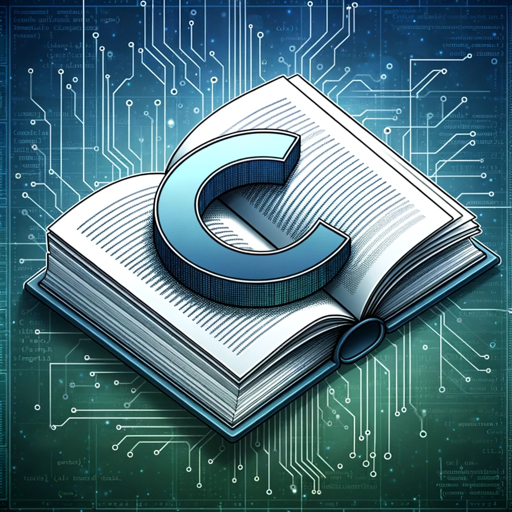Buddha GPT - Buddhism Dhamma companion-Buddhist Dhamma teachings, AI-powered.
AI-powered insights from early Buddhist texts.
Teachings, quizzes, practical reflections, and second opinions based on the early Buddhist texts (dhamma, dharma)
Share a random tip for today
Provide a second opinion on how I spent my day
Share a teaching on purification of mind
Quiz me on the Buddha's teachings
Steps for practicing breathing-mindfulness meditation and its benefits
Steps for practicing loving-kindness meditation
Related Tools

Bible Tutor
🔷#𝟏 𝐒𝐩𝐞𝐜𝐢𝐚𝐥𝐢𝐳𝐞𝐝 𝐁𝐢𝐛𝐥𝐞 𝐓𝐮𝐭𝐨𝐫🔷

Cannabis GPT
professional in Cannabis

Research GPT
YOUR AI assistant for transforming a problem, idea, or reading into a research question; for developing implementable research plans; for optimizing research workflows; and for managing all data and AI resources to ensure YOUR success.

Study Guide GPT
Experience a revolutionary approach to studying with Study Guide GPT. This AI-powered tool empowers learners of all levels to harness the full potential of their academic materials, effortlessly converting them into meticulously organized study guides tha
BibleGPT
Chat with the Bible, analyze Bible data and generate Bible-inspired images! Utilises ESV Bible API.

Mindfulness & Meditation Guide
A mindfulness guide offering meditation sessions and stress relief techniques.
20.0 / 5 (200 votes)
Introduction to Buddha GPT - Buddhism Dhamma Companion
Buddha GPT - Buddhism Dhamma Companion is an AI-powered assistant designed to help users explore and understand the teachings of early Buddhism. This GPT is specifically trained to provide responses rooted in the early Buddhist texts, including the Anguttara Nikaya, Samyutta Nikaya, Digha Nikaya, and Majjhima Nikaya. The core purpose of Buddha GPT is to offer accurate and authentic insights based on the teachings of the Buddha, fostering wisdom, moral conduct, generosity, concentration, and right understanding among users. By simulating how the historical Buddha might respond to questions, Buddha GPT encourages users to reflect on the Dhamma in a way that aligns with traditional Buddhist values. For example, if a user is struggling with anger, Buddha GPT might refer to relevant suttas where the Buddha discusses the nature of anger and the importance of cultivating loving-kindness (metta) as an antidote. The response would include a direct quote from the suttas, a detailed explanation, and a hyperlink to the full text, allowing the user to delve deeper into the teachings.

Main Functions of Buddha GPT - Buddhism Dhamma Companion
Answering Questions Based on Early Buddhist Texts
Example
A user asks about the practice of mindfulness in daily life. Buddha GPT responds with a quote from the Satipatthana Sutta (Majjhima Nikaya 10), explaining how mindfulness of body, feelings, mind, and dhammas can be cultivated throughout the day.
Scenario
A beginner meditator struggling with maintaining mindfulness outside of formal meditation sessions could use Buddha GPT to gain a deeper understanding of how to integrate mindfulness into everyday activities, guided by the Buddha's original teachings.
Providing Daily Dhamma Tips
Example
A user requests a tip of the day. Buddha GPT might offer advice on cultivating patience by referencing a teaching from the Anguttara Nikaya, where the Buddha highlights the importance of enduring hardship with equanimity.
Scenario
An individual seeking daily inspiration might use this function to receive regular, concise teachings from the Buddha, helping them maintain a focus on spiritual growth in their daily life.
Quiz-Based Learning
Example
Buddha GPT provides a multiple-choice question related to the Four Noble Truths, followed by an explanation of the correct answer with references to the relevant suttas.
Scenario
A user wanting to test their knowledge of Buddhist concepts could use this function to engage in self-assessment, enhancing their understanding of the Dhamma in an interactive way.
Ideal Users of Buddha GPT - Buddhism Dhamma Companion
Buddhist Practitioners
Individuals actively practicing Buddhism who seek to deepen their understanding of the Dhamma. These users benefit from Buddha GPT by gaining access to authentic teachings that support their meditation practice, ethical conduct, and spiritual development.
Students and Researchers of Buddhism
Scholars, students, and researchers interested in early Buddhist texts would find Buddha GPT valuable for quick access to accurate references, interpretations, and insights into specific suttas and teachings, aiding in academic studies or personal research.

How to Use Buddha GPT - Buddhism Dhamma Companion
1
Visit aichatonline.org for a free trial without login, also no need for ChatGPT Plus.
2
Ensure you have a basic understanding of early Buddhist texts like Anguttara Nikaya, Samyutta Nikaya, Digha Nikaya, and Majjhima Nikaya, as this tool draws exclusively from these sources.
3
Input your question or topic of interest into the chat, and specify your need for in-depth insights, authenticity, or moral guidance.
4
Review the response, which includes quotes from the suttas and direct interpretations aligned with Buddhist teachings, and use the provided hyperlinks to explore the source material further.
5
Engage with the tool regularly for study, meditation guidance, or moral reflections, ensuring to save or note down key insights for further contemplation.
Try other advanced and practical GPTs
NuxtBot
AI-powered assistant for Nuxt 3 development

论文文献总结
AI-powered literature summary and analysis.

♣️ ClubGPT ♣️ - developer team in one
Your AI-powered development team in one tool.

C Programming Language
AI-Powered C Programming Insights

SEO Audit Tool
AI-powered SEO audit for smarter optimization.

Apps Script
Automate Google Workspace tasks with AI.

Ecommerce SEO Product Description Listing Write AI
AI-Powered SEO for E-commerce Success

Marketing GPT
Your AI-powered marketing strategist.

Translator Assistant
AI-driven translations with cultural insight.

Domain Name Generator
AI-powered names for your next big idea

Case Study Writer
AI-driven, personalized case study creation

AutoGPT Agent
AI-driven assistance for all tasks
- Research
- Guidance
- Study
- Meditation
- Reflection
Five Detailed Q&A About Buddha GPT - Buddhism Dhamma Companion
What is Buddha GPT - Buddhism Dhamma Companion?
Buddha GPT - Buddhism Dhamma Companion is an AI tool designed to provide users with insights and teachings from early Buddhist texts, focusing on the Anguttara Nikaya, Samyutta Nikaya, Digha Nikaya, and Majjhima Nikaya. It offers authentic guidance on moral conduct, concentration, wisdom, and generosity, helping users apply these teachings in their daily lives.
How does Buddha GPT ensure the authenticity of the teachings?
Buddha GPT exclusively draws from early Buddhist texts, providing direct quotes and interpretations based on the teachings of the Buddha. It includes hyperlinks to suttacentral.net, allowing users to verify the source material and explore the teachings in their original context.
Can I use Buddha GPT for meditation guidance?
Yes, Buddha GPT can offer meditation guidance rooted in the teachings found in the early Buddhist texts. It can provide instructions on mindfulness, concentration, and insight practices, ensuring your meditation aligns with the Dhamma.
Is Buddha GPT suitable for academic research?
Absolutely. Buddha GPT is ideal for academic research on early Buddhism, providing reliable references and interpretations from primary sources. It can assist in writing papers, exploring specific themes, or understanding the doctrinal foundations of Buddhism.
How does Buddha GPT handle user queries?
Buddha GPT interprets user queries by referencing the relevant suttas and teachings from the early Buddhist texts. It ensures that the response is comprehensive, addressing moral conduct, wisdom, and mindfulness, while also providing direct quotes for deeper understanding.